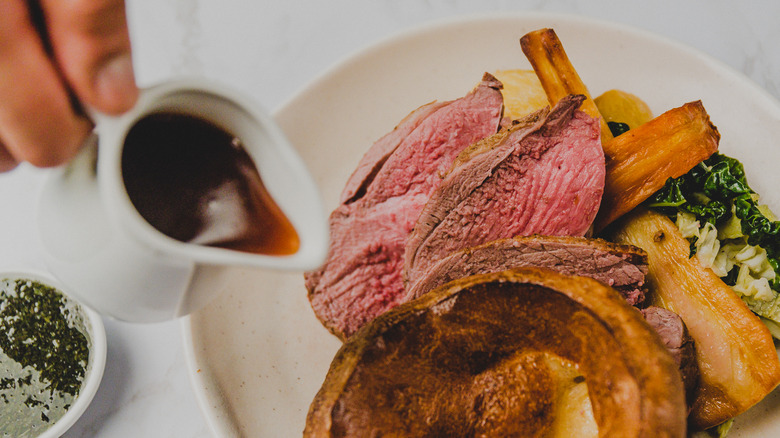Here's The Huge Sin You Are Committing When Making Gravy
Kitchen sins are easy to make, and they're sometimes out of your control. Still, there are ways to avoid them that are specific to each food or dish you're preparing. For example, you can run into trouble when making cold brew, pancakes, and even guacamole. You can also run into issues when making gravy. Gravy, after all, is a fickle condiment that you have to get just right.
Gravy is a blanket term that covers any thickened sauce used to cover meat or other foods. The base of most gravies is meat juice that has been thickened and then combined with more liquid to make a rich, thick sauce. Because most gravies use similar preparation methods, troubleshooting gravy-making mistakes is pretty universal. According to MyRecipes, the United States alone has many different kinds of gravy, but they usually all begin with some kind of meat. Sawmill gravy, for example, starts with ground sausage and is one of the most popular options, as it's the gravy used in the traditional dish known as biscuits and gravy. Still, other gravies, such as chicken gravy, are incredibly popular for their deep flavors that come from using the leftover oils and juices from cooking chicken and other meats.
While gravies are vast in flavor, they can be tricky to get perfect.
Follow these tips to get perfect gravy every time
Common mistakes people make when preparing gravy range from mishandling their ingredients to cooking errors, but they're easily fixable. One easy step toward success is not being afraid of starch or fat. According to Taste of Home, these two ingredients are crucial in gravy. They create a roux that acts as the backbone of your gravy, so if your proportions are off — or if you just don't want to add too much for health reasons — your gravy won't thicken properly. Plus, fat is a flavoring agent.
You always want to use a whisk when making gravy. The whisk's tines help dissolve starch pockets and generally help keep your gravy smooth and luscious. You also want to taste your gravy before you season it. The brown bits and meat juices have already seasoned your gravy, so you want to gauge its flavor before adjusting it.
Ultimately, the biggest sin when making gravy lies in your patience. According to The Kitchn, rushing your gravy is a huge issue. You need time in the gravy making process for your roux to form, for your liquid to heat up, for the roux to activate and thicken your liquid, and for your gravy to simmer and deepen its flavors. Most crucial here is not letting it cook long enough to thicken. Your liquid won't thicken as soon as you add it to the roux, so you must let it simmer together. But don't forget to whisk it while it cooks, because you don't want a skin or lumps to form.
If you haven't made gravy from scratch before, definitely start with a recipe to gauge the proportions of ingredients you should be using, but then have fun with it. Your gravy will come together in the end.

